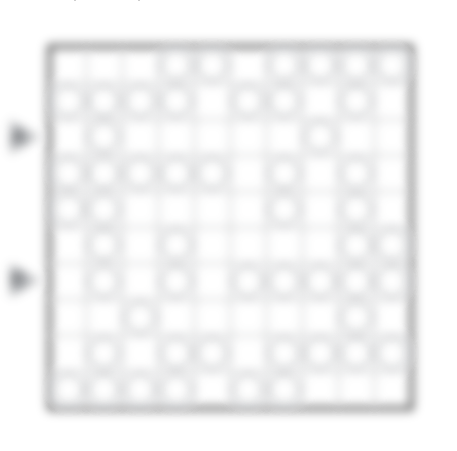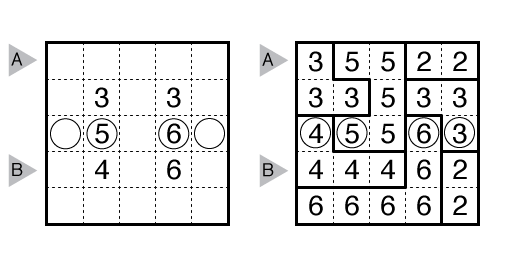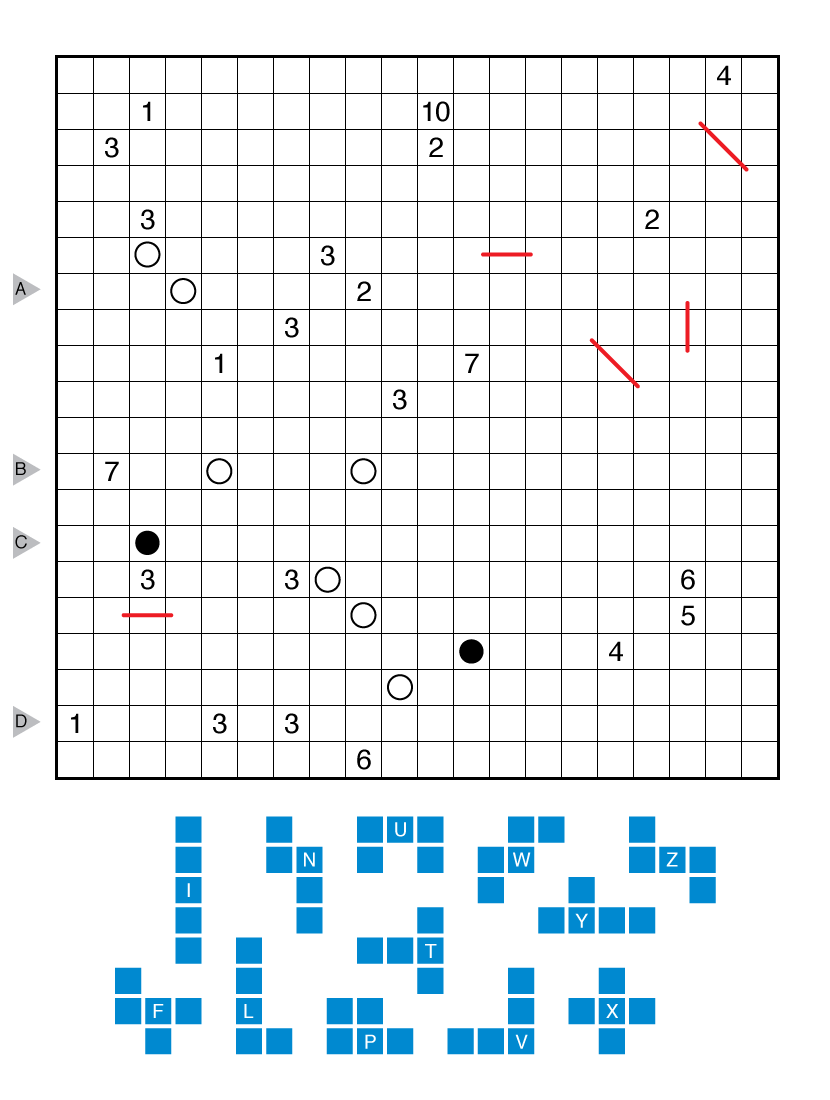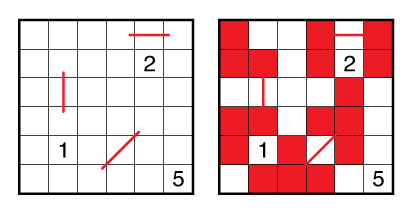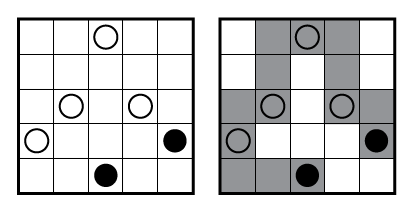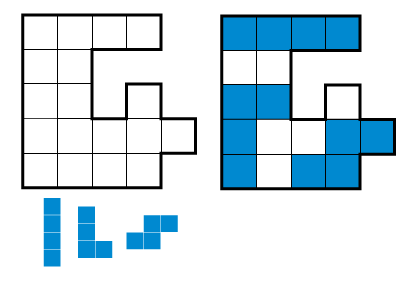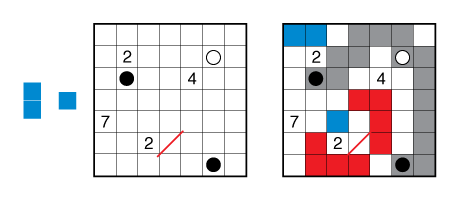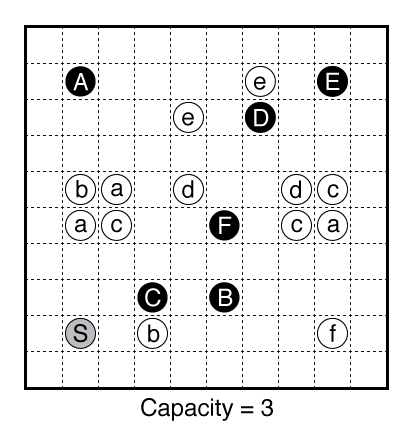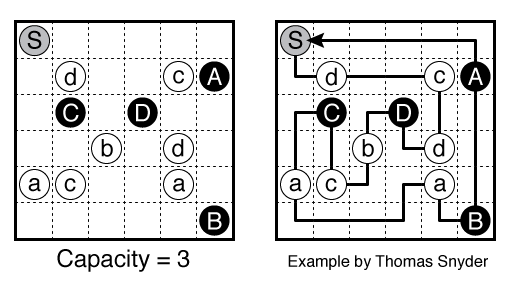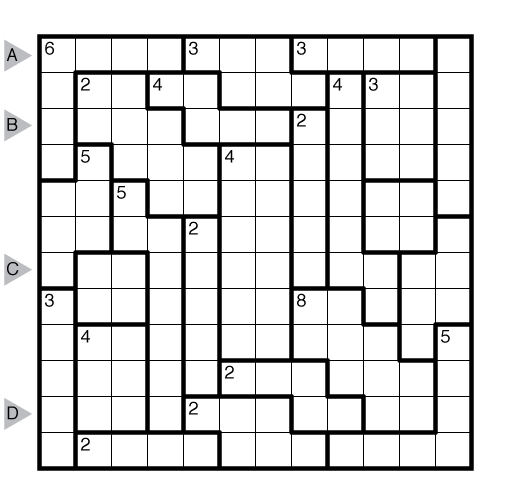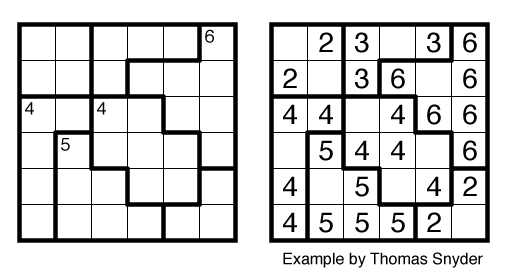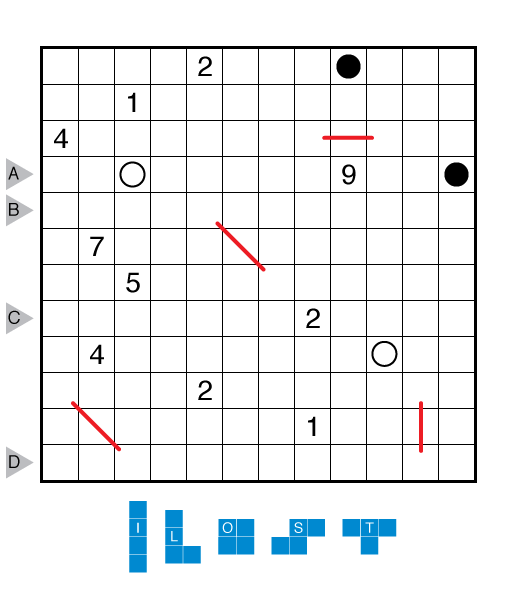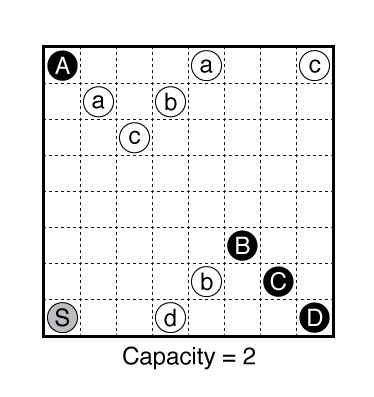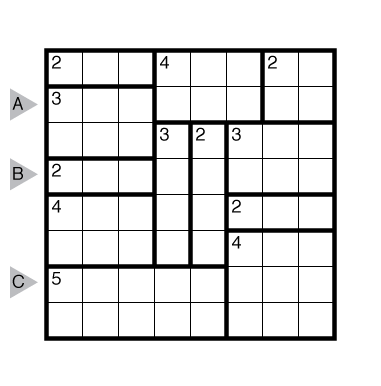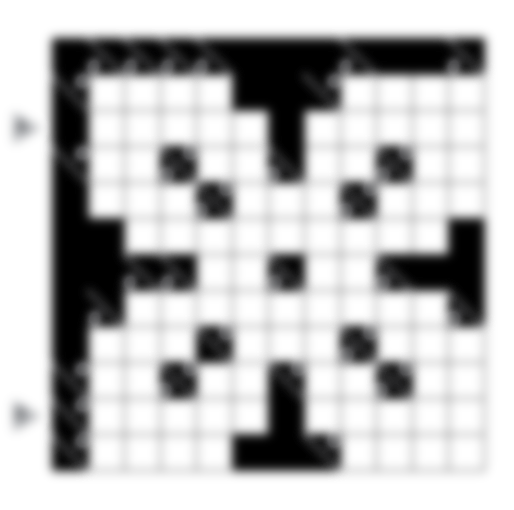Battleships (Loop) by Serkan Yürekli [bonus]
Our master+ subscribers receive access to two bonus puzzles each week in addition to other rewards. We make these posts so those supporters have a space to comment on these puzzles, mark as FAVES, or log their solving. If you are interested in subscribing and seeing these bonus puzzles, click here for more info.
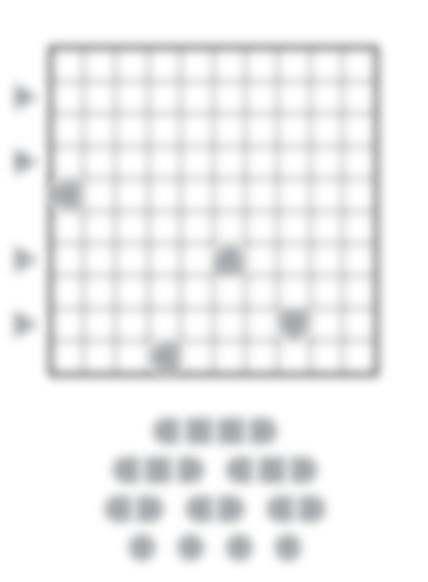
Theme: Threes
Author/Opus: This is the 246th puzzle from our contributing puzzlemaster Serkan Yürekli.
Rules: Standard Battleships rules. Also, all of the remaining cells not used by the fleet or given sea cells can be traversed by a single, closed loop (connecting cells horizontally or vertically).
Answer String: Enter the length in cells of the horizontal loop segments from left to right in the marked rows, starting at the top. If the loop only has vertical segments in the marked row, enter 0. Separate each row’s entry with a comma.
Time Standards (highlight to view): Grandmaster = 1:30, Master = 2:30, Expert = 5:00
Note: Follow this link for other classic Battleships. If you are new to this puzzle type, here are our easiest Battleships to get started on. More Battleships puzzles can be found in Battleships and Variations, in The Art of Puzzles, and in our beginner-friendly collection Intro to GMPuzzles by Serkan Yürekli.

